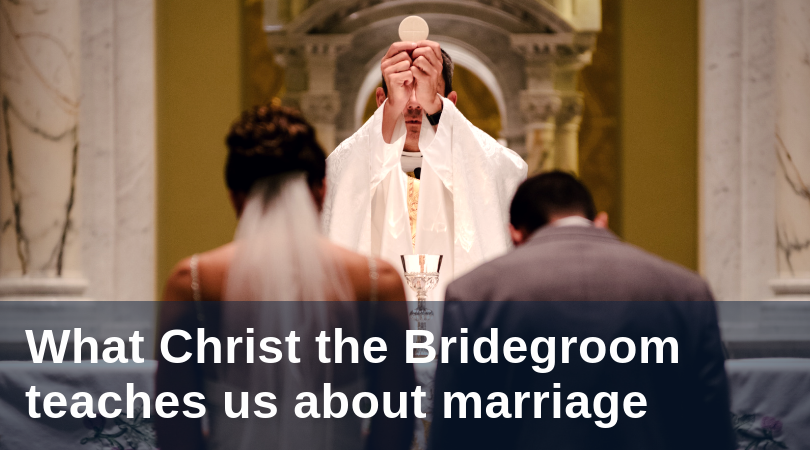
For first century Jews, it must have been strange when Christ, a wife-less celibate, identified himself as a bridegroom. Dr. Brant Pitre, professor of Scripture at the Augustine Institute, takes up this topic in his talk Christ as Bridegroom, outlining the various ways in which Christ demonstrates and models spousal love to the Church, as evident in Scripture.
In the Judeo-Christian tradition, marriage means more than a lifetime partnership. It is linked to salvation, unity with God, sacrifice and a kind of suffering tied up with love. In his lecture on Christ the Bridegroom, Dr. Pitre points to these four essential aspects of the holy sacrament of marriage:
Salvation
“Husbands, love your wives, as Christ loved the church and gave himself up for her” (Ephesians 5:22-33). In the letter to the Ephesians, St. Paul compares the marriage of husband and wife to the union of Christ and the Church. As a Jewish Christian, Paul understood that the fundamental shape of salvation history as a whole is nuptial. In the Jewish tradition, salvation begins with the wedding of Adam and Eve, when the bride is created from the flesh of the bridegroom. Since then, all of salvation history has been the unfolding of God’s covenental relationship with his people.
Unity with God
“I made my vow to you and entered into a covenant with you, declares the Lord GOD, and you became mine” (Ezekiel 16:8). The relationship between Yahweh and Israel is a model of marriage. More than the political liberation of a group, God’s covenant with Israel reveals the union of the Creator with his chosen people whom he has set apart. Similarly, Judeo-Christian marriage is a covenant that both unites together and sets apart from the rest. In both God’s covenant with Israel and the marriage covenant, the acknowledgement of something holy and extraordinary inspires an enduring promise.
Sacrifice
“The bride belongs to the bridegroom. The friend who attends the bridegroom waits and listens for him, and is full of joy when he hears the bridegroom’s voice. That joy is mine, and it is now complete” (John 3:29). In the Gospels, John the Baptist is a kind of “best man” who heralds the groom and then steps away at his arrival. At the start of John’s Gospel, Jesus turns water into wine at a Jewish wedding feast, revealing his identity as the bridegroom-Messiah. As he provides an abundance of wine, he also alludes to the future Messianic banquet where death is overcome by another abundant outpouring of wine, his own blood. In predicting his own passion, Jesus also frames his death in the context of a wedding day (see Matthew 9:14-15; Mark 2:18-20; Luke 5:33-35). But Jesus is no ordinary bridegroom and his marriage is no ordinary marriage; his redemption is nuptial. His wedding feast is the Last Supper, and the consummation of his marriage happens on the cross.
Suffering and Love
“It is by following Christ, renouncing themselves and taking up their crosses that spouses will be able to ‘receive’ the original meaning of marriage and live it with the help of Christ. This grace of Christian marriage is a fruit of Christ's cross, the source of all Christian life” (CCC, 1615). The Catechism of the Catholic Church also reiterates Christ's identity as the bridegroom, connecting the way Christ gave himself on the cross and the way a husband and wife give themselves to one another. Viewing Christian marriage through the lens of the cross reminds us how suffering and love are bound up together: the more willingly you suffer on another’s behalf, the more you love.
The full video of Dr. Pitre’s lecture Christ as Bridegroom is available on the McGrath Institute’s YouTube channel.
Photo Credit: Josh Applegate, Unsplash


